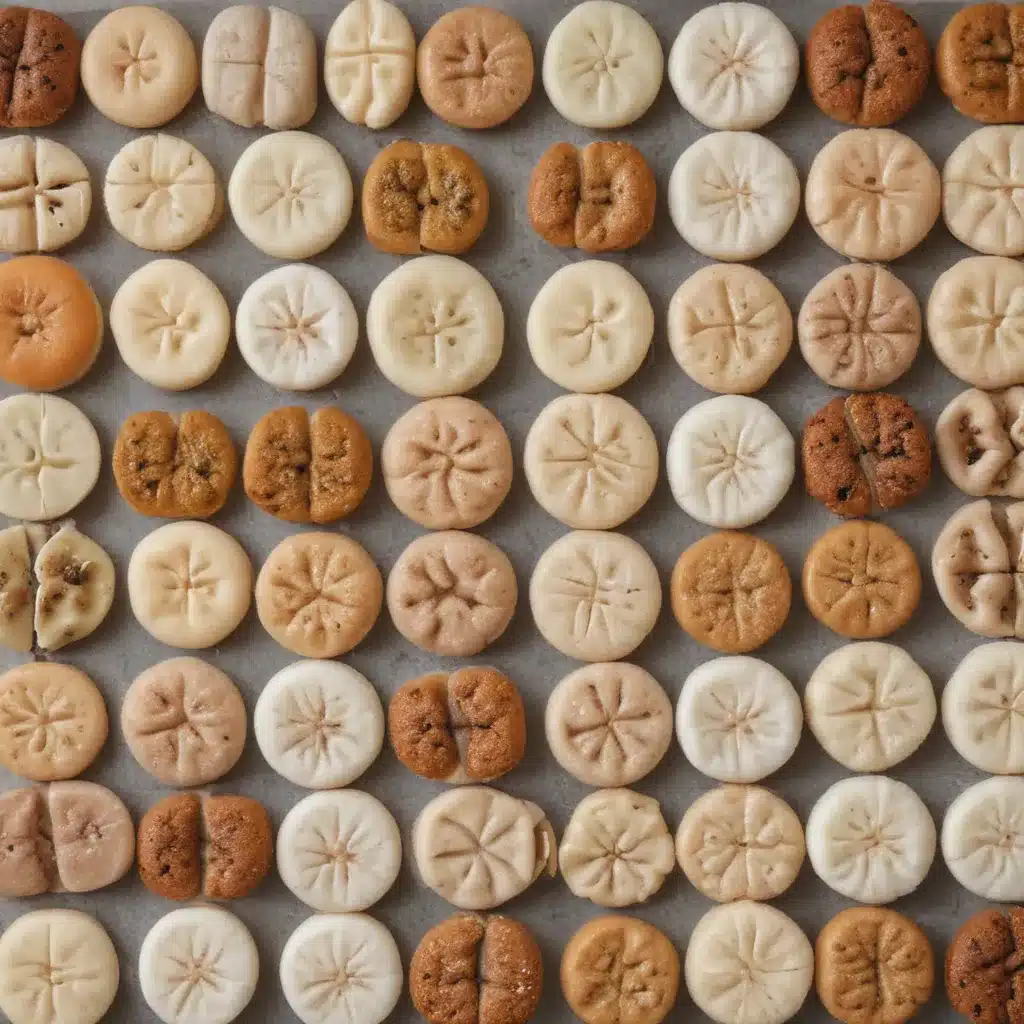
Discovering the Delightful World of Tteok
As I step into the vibrant heart of Boston’s Koreatown, the air is thick with the tantalizing aroma of sizzling meats, the soothing hum of Korean ballads, and the unmistakable scent of freshly pounded rice. This, my friends, is the realm of tteok – the enchanting Korean rice cakes that have captured the hearts and taste buds of countless food enthusiasts.
Let me take you on a journey through the captivating world of tteok, where each bite unveils a symphony of flavors, textures, and cultural traditions. As we explore the diverse varieties of these delectable delights, I’m confident that you’ll be as enamored with them as I am.
The Versatile and Alluring World of Tteok
Tteok is not just a simple snack; it’s a culinary art form that has been meticulously crafted and passed down through generations of Korean families. These rice cakes come in a dizzying array of shapes, sizes, and flavors, each one a unique expression of the country’s rich cultural heritage.
One of the most striking features of tteok is its mesmerizing visual appeal. From the delicate, cloud-like mochi-style tteok to the vibrant, marbled confections, these rice cakes are true works of edible art. And the flavors – oh, the flavors! – range from the subtlety of traditional sweetened rice to the bold and unexpected, like the savory and slightly smoky dasik tteok.
But tteok is more than just a pretty face; it’s a testament to the ingenuity and creativity of Korean cuisine. These rice cakes are not merely a dessert or a snack – they are woven into the fabric of Korean culture, serving as centerpieces for celebrations, offerings in religious ceremonies, and even as symbols of good luck and prosperity.
Exploring the Diverse Varieties of Tteok
As I delve deeper into the world of tteok, I’m struck by the sheer breadth of its diversity. Each region of Korea boasts its own unique variations, each with its own distinct flavors and preparation methods.
Let’s start with the ever-popular traditional tteok, such as the beloved tteokbokki – those spicy, chewy rice cakes that have become a staple of Korean street food. These fiery delights are a testament to the ingenuity of Korean cooks, who have elevated a simple rice cake into a culinary sensation.
But traditional tteok are just the tip of the iceberg. There’s the delicate and delightful songpyeon, a crescent-shaped rice cake traditionally enjoyed during the Chuseok harvest festival. These little gems are often filled with a variety of sweet or savory fillings, from the classic red bean paste to the intriguing sesame and chestnut.
And let’s not forget the mesmerizing mochi-style tteok, like the irresistible dduk-kkochi. These pillowy soft rice cakes are often coated in a sweet syrup or sprinkled with toasted sesame seeds, creating a textural contrast that dance on your tongue.
The Art of Tteok-Making
As I witness the intricate process of tteok-making, I’m left in awe of the skill and dedication required to create these edible masterpieces. It’s a true labor of love, one that has been honed and perfected over centuries.
The journey begins with the careful selection and preparation of the finest ingredients – the finest quality sticky rice, the perfect balance of sweeteners, and a meticulous attention to detail that would make even the most seasoned pastry chef blush.
The real magic, however, happens in the pounding and kneading of the rice dough. With each rhythmic strike of the wooden mallet, the tteok-makers transform the raw ingredients into a supple, pliable mass, imbuing it with a unique texture that’s both tender and chewy.
But the true artistry lies in the shaping and decorating of the tteok. Whether it’s the intricate swirls of the dasik or the delicate folds of the songpyeon, each rice cake is a work of edible art, a testament to the skill and creativity of the Korean culinary masters.
Tteok: A Celebration of Korean Culture
As I indulge in the flavors and textures of tteok, I can’t help but feel a deeper connection to the rich tapestry of Korean culture. These rice cakes are not just delicious treats; they are vessels through which the country’s history, traditions, and values are expressed.
Take, for instance, the role of tteok in Korean celebrations and festivals. During the Lunar New Year, families gather to prepare and share the traditional tteok-guk, a savory rice cake soup that symbolizes the start of a new year. And who can forget the iconic songpyeon, the crescent-shaped rice cakes that grace the tables during the Chuseok harvest festival, a time for family, reflection, and gratitude.
But tteok’s significance extends far beyond the realm of celebrations. These rice cakes have also been imbued with deep spiritual meaning, serving as offerings in religious ceremonies and as symbols of good luck and prosperity. The intricate patterns and designs adorning the tteok are not mere decorations, but rather, they carry profound cultural significance, reflecting the country’s rich artistic heritage.
Tteok: A Culinary Adventure Awaits
As I savor the last bite of my delectable tteok, I can’t help but feel a sense of wonder and excitement. This journey through the captivating world of Korean rice cakes has been a true revelation, a reminder that the most delightful culinary experiences often lie in the unexpected and the unfamiliar.
And for those of you who are yet to embark on this tteok-filled adventure, I urge you to step out of your comfort zone and explore the vibrant, delicious world of these enchanting rice cakes. Whether you’re drawn to the bold and savory tteokbokki or the delicate and sweet songpyeon, I can guarantee that a world of culinary delight awaits.
So, what are you waiting for? Grab a fork (or chopsticks!) and let’s dive into the wondrous world of tteok together!
